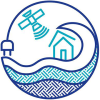Get to know » Teachers » Student difficulties perceived by the teacher:
Comparison to student-reported difficulties
Table RCTT#X below contrasts teacher and student responses to four similar items. Note that, while the items explored the same difficulties, they were worded differently and were on different scales.
Teachers were asked to assign each issue to a series of five experience buckets, while students were asked to indicate how often they were experiencing the same issues on a four-point scale.
The scales, therefore, are different, which complicates comparison. However, they are sufficiently similar to allow exploration of common and divergent perceptions across student and teacher respondents.
On average, teachers and students identify similar proportions of students experiencing hunger and tiredness. Large differences are seen, however, for the items intended to capture behavioural issues and attention issues that students struggle with. Teachers reported that their students were experiencing higher rates of these two difficulties than students reported themselves.
What does this mean?
Teachers observed a substantial minority of their students experiencing difficulties in their learning. Of these, teachers identify behavioural and cognitive difficulties as the most common.
Teachers’ responses cannot be directly compared to students’ responses in similar areas but when looked at together, it is clear that there is a range of behavioural and physiological difficulties experienced by a substantial minority of students.
Students identify physiological issues (hunger, tiredness) as a more common experience than do teachers. However, teachers observe behavioural issues (concentrating, controlling behaviour) more frequently than students report them. It may be that students and teachers have different perspectives on what constitutes behavioural issues, and students may be less likely to recognise their behaviours as problematic.
This suggests that behavioural issues, as a whole, are quite common in the student body, and that teachers’ assessments of physiological issues are aligned with students’ reports of these.








